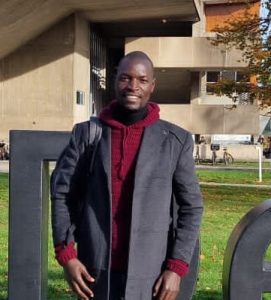Honore's Journey with TAHMO
 My journey with TAHMO began in 2019 during my university days when I joined as an intern. It was my inaugural foray into the professional world, and every step since then has been immensely enjoyable. TAHMO played a pivotal role in my Final Year Project by providing essential tools and invaluable guidance. From its inception, TAHMO fostered a startup culture marked by innovation, flexibility, and a cohesive team dedicated to a shared vision. The company’s ethos of integrity and transparency has remained steadfast, evolving alongside its growth.
My journey with TAHMO began in 2019 during my university days when I joined as an intern. It was my inaugural foray into the professional world, and every step since then has been immensely enjoyable. TAHMO played a pivotal role in my Final Year Project by providing essential tools and invaluable guidance. From its inception, TAHMO fostered a startup culture marked by innovation, flexibility, and a cohesive team dedicated to a shared vision. The company’s ethos of integrity and transparency has remained steadfast, evolving alongside its growth.
When I first joined TAHMO, it was primarily a solitary endeavor focused on station maintenance. Today, we boast a team of over two assistant technicians equipped to tackle technical challenges with finesse. TAHMO has proudly showcased its innovations at prestigious events like GSMA, the Tech Agriculture Exhibition, and Loop Edutech Incubation by GIZ.
The transition to remote work posed challenges for some stakeholders, but amidst the COVID-19 pandemic, virtual offices have become the new norm. Our responsibility now lies in persuading stakeholders through product excellence rather than physical office spaces.
One of TAHMO’s standout achievements was its partnership with RCMRD in Rwanda to organize the RWANDA SPACE Challenge STEM Bootcamp. Witnessing the boundless potential of the younger generation when provided access to data was truly inspiring. This initiative perfectly embodies TAHMO’s mission of revolutionizing weather services through knowledge-sharing and data-driven decision-making.
Being part of the TAHMO team offers a profound sense of fulfillment, contributing to a noble cause of enhancing weather monitoring and climate resilience across Africa. The opportunity to collaborate with a diverse and talented team, the prospect of innovation and problem-solving, and the avenues for personal and professional growth within the company are all compelling reasons to remain committed to TAHMO’s mission.








